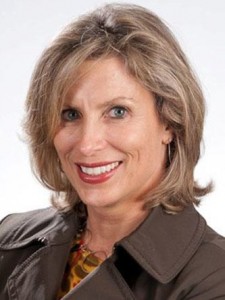As a part of our talent acquisition engagements, we ask our clients how they define “top talent” and how they would assess those traits in the interview process. Reflecting on the insightful comments we hear every day, we thought there would be great value in a new blog in which senior executives/thought leaders share their “Take on Talent.”
This is the eighth in a series of blogs/interviews with senior executives who are thought leaders in the areas of Talent Acquisition, Career Development and Leadership who will share their perspectives on this ever present question.
 Tracy Mendez is the Senior VP & GM in Global Accounts, covering the Industrial & Retail Sectors at Xerox. She leads a team of Managing Directors responsible for delivering revenue / OP growth through the full portfolio solutions (BPO and Document Outsourcing) to Xerox’s marquis clients. The evolved sales and operations model supports strategic client partnerships focused on solving industry challenges. Tracy’s consistent record of driving revenue growth and improving profitability is underpinned by an approach that incorporates innovation & transformation.
Tracy Mendez is the Senior VP & GM in Global Accounts, covering the Industrial & Retail Sectors at Xerox. She leads a team of Managing Directors responsible for delivering revenue / OP growth through the full portfolio solutions (BPO and Document Outsourcing) to Xerox’s marquis clients. The evolved sales and operations model supports strategic client partnerships focused on solving industry challenges. Tracy’s consistent record of driving revenue growth and improving profitability is underpinned by an approach that incorporates innovation & transformation.
Prior to this role, Tracy designed and implemented standardized Strategic Pursuit Centers worldwide. Her international experience is derived from running Major accounts Xerox Global Services in Developing Markets, driving 45% growth to $415M. Continue reading →
by Rebecca Newton




 Tracy Mendez is the Senior VP & GM in Global Accounts, covering the Industrial & Retail Sectors at Xerox. She leads a team of Managing Directors responsible for delivering revenue / OP growth through the full portfolio solutions (BPO and Document Outsourcing) to Xerox’s marquis clients. The evolved sales and operations model supports strategic client partnerships focused on solving industry challenges. Tracy’s consistent record of driving revenue growth and improving profitability is underpinned by an approach that incorporates innovation & transformation.
Tracy Mendez is the Senior VP & GM in Global Accounts, covering the Industrial & Retail Sectors at Xerox. She leads a team of Managing Directors responsible for delivering revenue / OP growth through the full portfolio solutions (BPO and Document Outsourcing) to Xerox’s marquis clients. The evolved sales and operations model supports strategic client partnerships focused on solving industry challenges. Tracy’s consistent record of driving revenue growth and improving profitability is underpinned by an approach that incorporates innovation & transformation.![iStock_000008828650Small[1]](http://www.issg.net/wp-content/uploads/iStock_000008828650Small1-150x150.jpg) flocks of starlings, known as murmurations, exhibit a rare combination of speed and scale. The birds coordinate themselves with remarkable agility to find food and avoid attacks. Schools of fish do the same.
flocks of starlings, known as murmurations, exhibit a rare combination of speed and scale. The birds coordinate themselves with remarkable agility to find food and avoid attacks. Schools of fish do the same. by Melissa Daimler
by Melissa Daimler